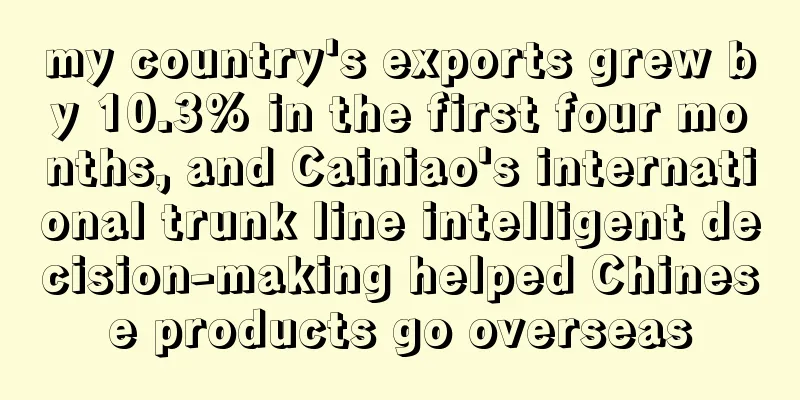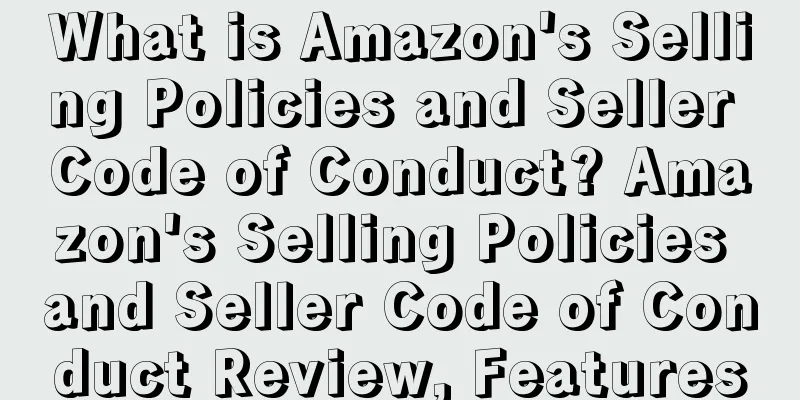A seller lost more than 10 million! Where did the money go?

|
Opportunities and anxieties for cross-border sellers!
The first priority for cross-border sellers is to make money, but the reality is cruel. The road to entrepreneurship is "nine lives and one death". There are not many people who make a lot of money, but there are many who lose money. According to industry insiders, some people have lost more than 10 million since they entered the cross-border e-commerce industry.
It is easy to enter the industry but difficult to exit it. After many sellers lose money in cross-border business, their first thought is not to exit the industry, but to change sales channels and continue to do business.
Sellers lose more than 10 million yuan in cross-border business! Where did the money go?
Recently, news has emerged that many cross-border sellers have lost money.
According to an industry insider, a factory manager in Fengzhong revealed that the boss of a small home appliance factory suffered losses in the cross-border track. The first loss was over 8 million. Despite this, the boss still had a lot of capital, and he believed that there was room for operation in cross-border business, so he built his own team to continue cross-border business. Unfortunately, he still could not reverse the loss situation, but lost more, the amount exceeded 10 million.
Coincidentally, another seller also said that he has been losing money for three years and is now using income from other projects to make up for the cross-border losses. When he switched from domestic e-commerce to cross-border business, he lost nearly one million in the first year. Although the amount of loss decreased each year in the next two years, his entrepreneurial passion was almost worn out by the continued sluggish performance, and he is now confused.
Seller Xiao Zhang summarized the loss cases of his peers and believed that " having money but blindly confident " is their common problem . Many bosses just heard that cross-border business is easy to do, so they directly brought funds into the market without doing any research. In this way, the cost of trial and error will only be high, not low. Due to too much loss, the initial confidence disappears, and the investment funds and energy in the cross-border e-commerce field will also be greatly reduced. The final result is obvious: cross-border e-commerce is likely to fail.
Big sellers with more capital lose more, while small sellers with less capital lose less. Regardless of how much they lose, it once again proves that "cross-border e-commerce is a money-burning business." As we all know, cross-border e-commerce requires investment before it can pay off. Whether it is finding a factory to customize products, logistics and transportation, or product promotion and management, it all requires a considerable amount of money. Office rent, employee wages, etc. are also a big part of the cost. If a product is finally profitable, all the seller's initial investment will naturally be recovered until it is profitable, but profit is a relatively long process. If a main product fails to be promoted, the loss is real and may even affect cash flow.
Multi-platform layout! Amazon, Walmart, and Temu platform sellers overlap
There are many people who suffer losses in cross-border business. Some people choose to withdraw from the cross-border business, while many others grit their teeth and move forward . In the eyes of those in the industry, every industry needs to take a detour. Changing to a new industry means starting all over again. In comparison, staying in the current industry is a better choice. This does not mean that they will "stick to one platform".
As a popular cross-border platform, Amazon has a large flow of traffic, many buyers, and wide popularity. It is undoubtedly an ideal gathering place for sellers. Amazon pays more attention to long-termism. Losing money in the short term and making money in the later period is naturally worth long-term investment . If long-term investment still loses money , sellers need to adjust their direction in time or change platforms. It is very important to find an e-commerce platform that suits you.
Although those sellers who make profits on Amazon have not taken any measures to change platforms, they are actively developing multi-platform layouts in order to weaken their dependence on a single platform, find the "best alternative" to Amazon, and open up new profit points. Marketplace Pulse data shows that third-party sellers on platforms such as Amazon, Walmart, and Temu overlap, and usually a seller will sell the same products on multiple platforms. In March, more than 50% of new sellers on Amazon and Walmart were from China; many of them have joined Temu or are about to join.
More than 50% of Walmart sellers sell on Amazon. Generally speaking, sellers tend to choose the Amazon platform first, and then expand their business to Walmart. It is rare to see sellers who only sell on Walmart or use Walmart as their main channel.
More than 20% of Temu sellers sell on Amazon and Walmart. They generally have inventory in the US market. Walmart and Amazon sellers are ideal sources of sellers for the Temu platform because these sellers are experienced in international sales and have inventory overseas.
In terms of product prices, sellers usually sell at the same price on Amazon and Walmart. There is no advertising and other expenses on the Temu platform, so the product prices are also lower; however, Amazon and Walmart deliver faster. In terms of product variety, Amazon undoubtedly has the widest range of products, followed by Walmart. Temu only has some brands and products from Amazon and Walmart. Temu, which is still developing rapidly, may make up for the difference in product variety and delivery speed in the future and grow into a platform chosen by more consumers.
Analysis of popular platforms in each market!
In the current cross-border circle, some people say that to enter Amazon, you need to invest 500,000 yuan to win a prize, while others say that to enter an independent site, you need to invest 1 million yuan to scratch a lottery ticket... This reflects to a certain extent that each platform has its own advantages and disadvantages, and the one that suits you is the best.
From the market perspective, each region has its own "ace" platform. For example, Shopee and Lazada in Southeast Asia, AliExpress, Ozon and Wildberries in Russia, Meikeduo in Latin America, Coupang in the Korean market, Allegro, the first e-commerce platform in Poland...
Just as many sellers have their own advantageous products, many platforms also have their own main vertical categories:
Fashion e-commerce platforms include Zalando (Europe), Myntra (South Asia), Dafiti (South America), Poshmark (North America), Spartoo (Europe), Zalora (Southeast Asia), Grailed (North America), Privalia (Europe), and Depop (global); Books e-commerce platforms include Barnes and Noble (North America), AbeBooks (global), Biblio.com (North America), etc. Homewares e-commerce platforms include Wayfair (North America), ManoMano (Europe), Houzz (Global), Conforama (Europe), etc. Electronics e-commerce platforms include Best Buy (North America), Newegg (North America), G2A.com (global), digitec (Europe), GAME (Europe), etc.
An industry insider said that Amazon is the platform with the most development prospects. If sellers have highly competitive products, can develop products independently or have obvious supply chain advantages, entering Amazon will undoubtedly create a 1+1 > 2 effect, and they can also develop on other platforms. If they mainly make public models and do not have exclusive advantageous products, they can also choose some relatively niche distribution platforms. In any case, sellers must be clear about their financial situation and operational capabilities, so as to choose the most suitable products, markets and platforms for themselves, and then take steady steps to find a unique sense of direction and methodology in the process of continuous practice . |
<<: Amazon’s new algorithm is born, will the cross-border circle be “reshuffled”?
>>: E-net completes angel financing, plans to expand overseas brands and incubate new businesses
Recommend
Amazon's Clay distribution center will begin operations on April 18
On March 22, Amazon issued a statement saying tha...
What is SureDone? SureDone Review, Features
<span data-docs-delta="[[20,{"gallery"...
What is servbuy? servbuy Review, Features
servbuy is an online website that focuses on acces...
Can small and micro toy manufacturers survive in the cracks?
Although many sellers have stated that the situat...
What is lauraartcouk? lauraartcouk Review, Features
LauraArtcouk has been adhering to the concept of &...
With 6 million yuan of funds frozen, how difficult is it for foreign traders to “put their money in safe hands”?
With 6 million yuan of funds frozen , how difficu...
What is New Baifu International Logistics? New Baifu International Logistics Review, Features
Xinbaifu International Logistics (Henan Xinbaifu ...
A post-95s generation switched to cross-border business and it took him 2 months to complete 1,000 orders per month!
In recent years, led by the entrepreneurial boom,...
Russia's purchases in December increased by 26% year-on-year
During the year-end procurement period, purchases...
What is Wooden Street? Wooden Street Review, Features
Wooden Street is an e-commerce platform that sell...
What is Cross-border Lighting Group? Cross-border Lighting Group Review, Features
Cross-border Light is a cross-border e-commerce ec...
Shenzhen big sellers need to report to the police
According to preliminary estimates, China's c...
Screen time increases by 30%, Indonesia's e-commerce growth is rapid
Affected by the epidemic , people's lifestyle...
More than 38% of consumers prefer to buy products with sustainable features or packaging
Research agency BOXpoll found that more than a th...
Amazon to offer buy now, pay later service to US consumers
With the rapid development of e-commerce and onli...









